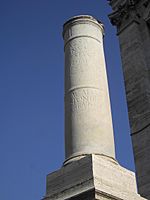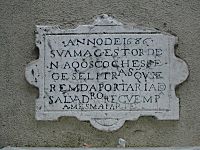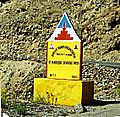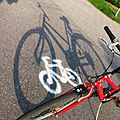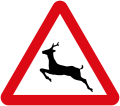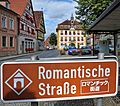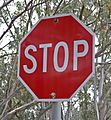Traffic sign facts for kids
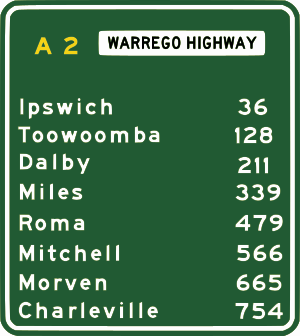

Traffic signs or road signs are special signs placed next to or above roads. They give instructions or information to people using the road, like drivers, cyclists, and pedestrians. The very first signs were simple wooden or stone markers called milestones. Later, signs with arms pointing in different directions were used, like the fingerposts you can still see in the United Kingdom.
As more and more cars appeared after the 1930s, many countries started using signs with pictures (called pictograms). This helped people understand the signs even if they spoke different languages. It also made roads safer. These picture signs use symbols instead of words. They are often based on international rules. Europe was the first to develop these kinds of signs. Now, most countries use them in some way.
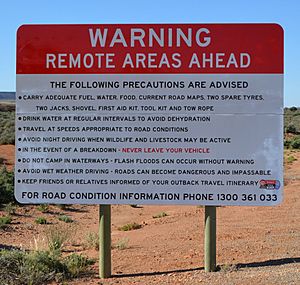
Contents
Why Are Road Signs Similar Around the World?
Countries try to make their traffic signs similar to each other. This helps drivers who travel between different countries. One important agreement that helps with this is the Vienna Convention on Road Signs and Signals. Many countries have signed this agreement. This means they agree to use similar types of signs. This helps avoid confusion and makes roads safer for everyone.
Types of Traffic Signs
Traffic signs can be put into different groups based on what they tell you. The Vienna Convention on Road Signs and Signals lists eight main types of signs:
- A. Danger warning signs: These signs tell you about possible dangers ahead, like a sharp curve.
- B. Priority signs: These signs tell you who has the right-of-way at an intersection.
- C. Prohibitory or restrictive signs: These signs tell you what you are not allowed to do, like "no entry."
- D. Mandatory signs: These signs tell you what you must do, like "turn left ahead."
- E. Special regulation signs: These signs give specific rules for a certain area.
- F. Information, facilities, or service signs: These signs give helpful information, like where a hospital is.
- G. Direction, position, or indication signs: These signs tell you which way to go to reach a place.
- H. Additional panels: These are smaller signs placed below other signs to give more details.
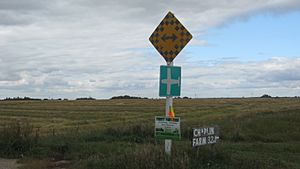
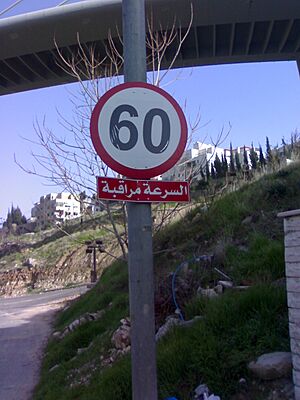
In some countries like the United States, Canada, Australia, and New Zealand, signs are grouped a bit differently:
- Regulatory signs: These signs tell you about traffic laws, like speed limits or stop signs.
- Warning signs: These signs warn you about hazards, like a deer crossing.
- Guide signs: These signs help you find your way. They include:
- Street name signs: Show the name of a street.
- Route marker signs: Show the number of a highway.
- Expressway and Freeway signs: Help you navigate major highways.
- Welcome signs: Greet you when you enter a town or state.
- Informational signs: Give general information.
- Recreation and cultural interest signs: Point to parks or historical sites.
- Emergency management signs: Used for civil defense or emergencies.
- Temporary traffic control signs: Used in construction or work zones.
- School signs: Warn drivers about schools or school crossings.
- Railroad and light rail signs: Warn about train tracks.
- Bicycle signs: Help cyclists find bike paths or lanes.
In the United States, the rules for traffic signs are found in a book called the Manual on Uniform Traffic Control Devices. This book makes sure that signs are the same everywhere in the country.
On big roads like expressways, you often see signs that help you prepare for an exit. These are called "advance directional signs." They appear a certain distance before the exit. This gives drivers time to change lanes or slow down. On motorways, the first sign for an exit is usually placed at least 1,000 meters (about 0.6 miles) away.
The History of Road Signs
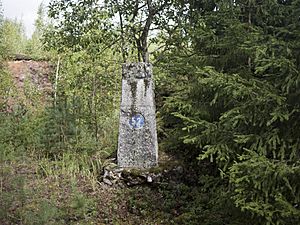
The very first road signs were milestones. These were stone markers that told travelers how far they were from a city. For example, the Romans put up stone columns all over their empire showing the distance to Rome. In the Middle Ages, signs at crossroads became common. They pointed to different cities and towns.
In 1686, the first known traffic law in Europe was made in Portugal. King Peter II of Portugal ordered signs to be put up in the narrow streets of Lisbon. These signs told drivers which way should back up to let others pass. One of these old signs can still be seen today!
Modern road signs started to appear in the late 1870s. They were made for people riding bicycles. These early bicycles were fast and hard to control. Riders often traveled long distances on roads they didn't know. So, cycling groups started putting up signs to warn riders about dangers like steep hills. This was a new idea, as signs used to only give directions or distances.
When cars became popular, even more complex signs were needed. One of the first modern road sign systems was created by the Italian Touring Club in 1895. By 1909, nine European governments agreed to use four simple picture symbols. These symbols showed a "bump," a "curve," an "intersection," and a "railroad crossing." This was a big step towards making signs the same everywhere.
Over the years, signs changed how they were made. Early signs were stone or wood. Then, people started using painted cast iron. After 1945, most signs were made from aluminum sheets with special plastic coatings. These coatings make the signs reflective, so you can see them at night or in low light. Before this, glass reflectors were used in the letters and symbols to make them shine.
Today, some traffic signs are electronic. They can change their messages or symbols. This allows them to give real-time information about traffic or road conditions. Some cars even have cameras that can "read" traffic signs. This helps drivers know the speed limit or if they are in a "no overtaking" zone.
-
A 17th-century traffic sign in Salvador street, Lisbon, Portugal. It tells traffic coming from Salvador's entrance to back up.
Cars That "Read" Signs
Some newer cars have cameras that can automatically recognize traffic signs. This technology started appearing around 2008. It mainly helps cars "see" speed limits and "no overtaking" signs. It can also use GPS and maps to know speed limits, which is helpful in cities where the speed limit is often shown by a city name sign instead of a separate speed limit sign.
Images for kids
-
Enjoy the works you do and do the best you can. Sign on road from Leh to Key Monastery.
-
Sign north of Nome, Alaska, warning about the road and unpopulated area ahead.
-
"Know AIDS - No AIDs". Nubra Valley, Ladakh, India.
-
"After Whisky Driving Risky". Lahaul, India.
-
"If Married Divorce Speed". Ladakh, India.
-
Pedestrian crossing sign in Finland.
-
A Turkish motorway sign.
-
The design specifications for a Taiwanese sign warning of double bends ahead. Translated directly, it means that there are winding roads for the next ten kilometres.
-
A yield sign in Mexico.
See also
 In Spanish: Señales de tráfico para niños
In Spanish: Señales de tráfico para niños
- Button copy
- Exit number
- Fingerpost
- Gantry (transport)
- Glossary of road transport terms
- List of public signage typefaces
- Road surface marking
- Rules of the road
- Street sign theft
- Tourist sign
- Traffic light
- Traffic signs by country
- Traffic sign design
- Variable-message sign
- Warning sign





